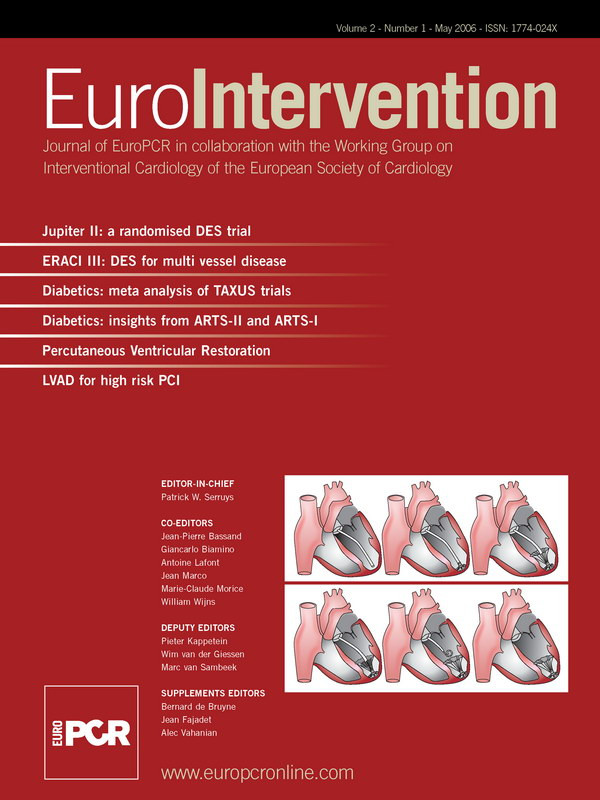Our EuroIntervention adventure is now entering its second year and we take great pride in welcoming you to an issue which we hope you will find as exciting and interesting as we do. Like everything in our relatively young specialty, this is a fruit of the labour and vision of many. Collaboration and vision is what has made what we are doing today possible and that is why we continue to remember with great respect the early years of our work, with first hand accounts by Drs. Roubin and Sousa of their “First Twenty years of Stenting”.
But as you know, we do not sit on our laurels. Progress, and the problems we need to address move us on and we invite you to examine the challenges of unified European speciality training by reading the proposals of Working Group 10 of the European Society of Cardiology, participants in – and regular contributors to – our journal.
One of our key articles is from Marie-Claude Morice introducing us to the latest from JUPITER II. This is the randomized trial comparing the performance of tacrolimus-eluting stents (TES) with equivalent carbon-coated stents and involves over 300 patients with de novo coronary stenoses. We have another article discussing the ERACI III study, which extends the results of the excellent earlier ERACI trials to the widespread use of DES in today’s clinical practice, comparing a non-randomized cohort to a previously published patient population.
EuroIntervention then turns toward the ongoing concern with diabetes. In an article by Keith Dawkins, we have a reflection on the benefit of TAXUS stents over bare metal stents in this high-risk group for restenosis. Though the paper is essentially a meta-analysis, it is not without its hands-on side, offering practical information on how to optimize therapy in diabetic patients requiring pharmacotherapy. Another article by Carlos Macaya analyses existing studies, this time focusing on the subset analysis of diabetic patients enrolled in ARTS-I and II. Adverse outcomes of the diabetic patients vs non-diabetic patients are shown, demonstrating that overall MACCE rates in diabetic patients are significantly higher. We will continue addressing these problems in upcoming issues of our journal.
There are articles and technical reports on the controversial area of assist devices in high-risk PCI. Special case reports on percutaneous ventricular restoration, with an accompanying technical report of a world premiere device… and additional information – including videos – of these devices and much more on our increasingly popular website, do not forget to join us there.
And of course this issue is coming to you at the same time as the EuroPCR, which needs no introduction. As Jean Marco says in his editorial, “innovation is the path” we have chosen to follow. And it is an innovation based on our work together, on our ability to communicate, on our commitment to clarity and ethics and we are happy that EuroIntervention is now an essential part of this endeavour.

